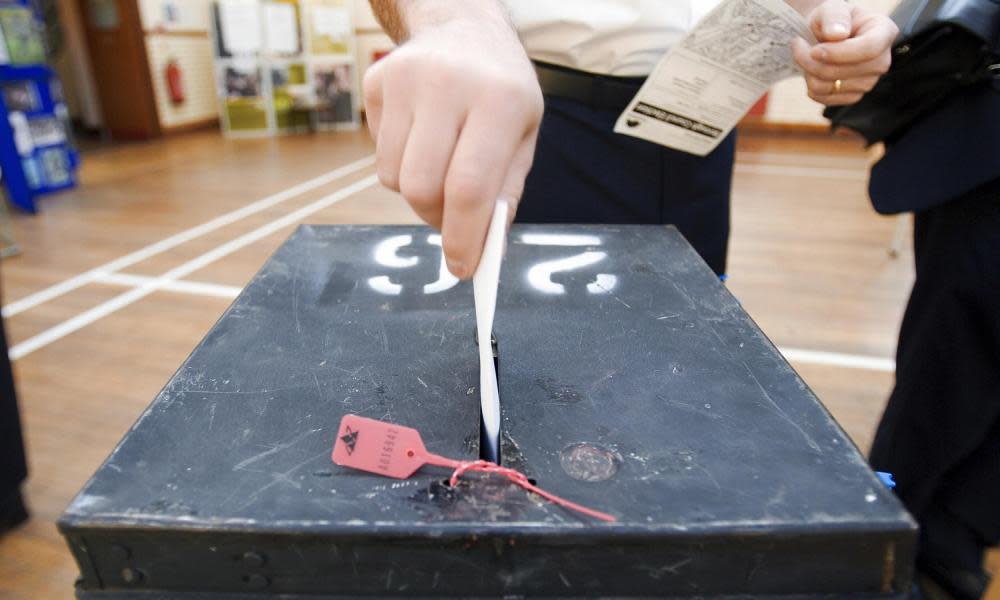Tories head for record low in London local elections

Conservative party support in London looks set to slump to a record low at the local elections on 3 May as the young, ethnically diverse electorate turns to Labour in increasing numbers.
Projections from the Tory peer and psephologist Robert Hayward indicate the Conservatives will lose about 100 council seats. If they lose more than 93 – less than three seats in each of London’s boroughs – the Tories would fall below their previous low of 511 councillors in the capital. That came in 1994, just after the pound had fallen out of the exchange rate mechanism and Labour had begun the recovery that led to its 1997 general election landslide.
“I’d be surprised if the Tories did not have an all-time low number of councillors,” Hayward said. “Labour were very successful in London in the general election last year and I’d expect that to continue in 2018.”
The Tories could even lose their two flagship boroughs of Wandsworth, which has been in Conservative control since 1978, and Westminster, which has been Tory since the last local government reorganisation in 1964.
More likely, Barnet in north London might go Labour and the Liberal Democrats could triumph in Kingston in south-west London where they are also targeting the neighbouring council, Richmond.
The most spectacular reverse would be the loss of Kensington and Chelsea, the Conservative heartland won by Labour with the narrowest of margins at last year’s general election, where the Tory council has come under fire for its mishandling of the Grenfell Tower fire.
London-only polling reveals the strength of Labour in the capital, where it is 11.8 points up on its 2014 vote share. Outside the capital, however, the party’s share of the vote is up only 5.8 points, overshadowed by a 7.6% rise for the Tories, buoyed by a fading Ukip. That means the Conservatives will be likely to claim a win of sorts if it remains the largest party in local government, a position it has held for more than a decade.
Labour is likely to do well in its traditional strongholds such as Newcastle, Leeds, Manchester and Rotherham. The Tories may lose control of the Manchester borough of Trafford, where they hang on by only one seat. But they look unshiftable in their other metropolitan authority in Solihull and in the shires and in the districts.
One Labour source said the party wanted to use the polls to plot advances into new territories, which could then be built on in a general election.
“This is the cycle that favours us, particularly,” the source said. “Last year was our worst cycle and this year is our best. It’s much less defensive this time – it’s about seeing where we can make gains.”
Labour will be assisted by a push from Momentum, the youthful Jeremy Corbyn-supporting group, which hopes to test out election strategies and flood target areas with hundreds of activists.
A month ago, Theresa May’s fortunes seemed to hang on the results. But her standing has steadied because of her handling of the Salisbury poisoning and could be strengthened further by the perception of progress on Brexit.
Many local councils have redrawn boundaries, making it hard to compare this year’s results with the last time they were contested in 2014. However, the overall picture will reveal how far the divisions that first became apparent in the referendum vote in 2016 and were repeated in last year’s general election may have become even more entrenched. Labour controls the cities, and the Tories the towns and rural areas.

 Yahoo News
Yahoo News 
